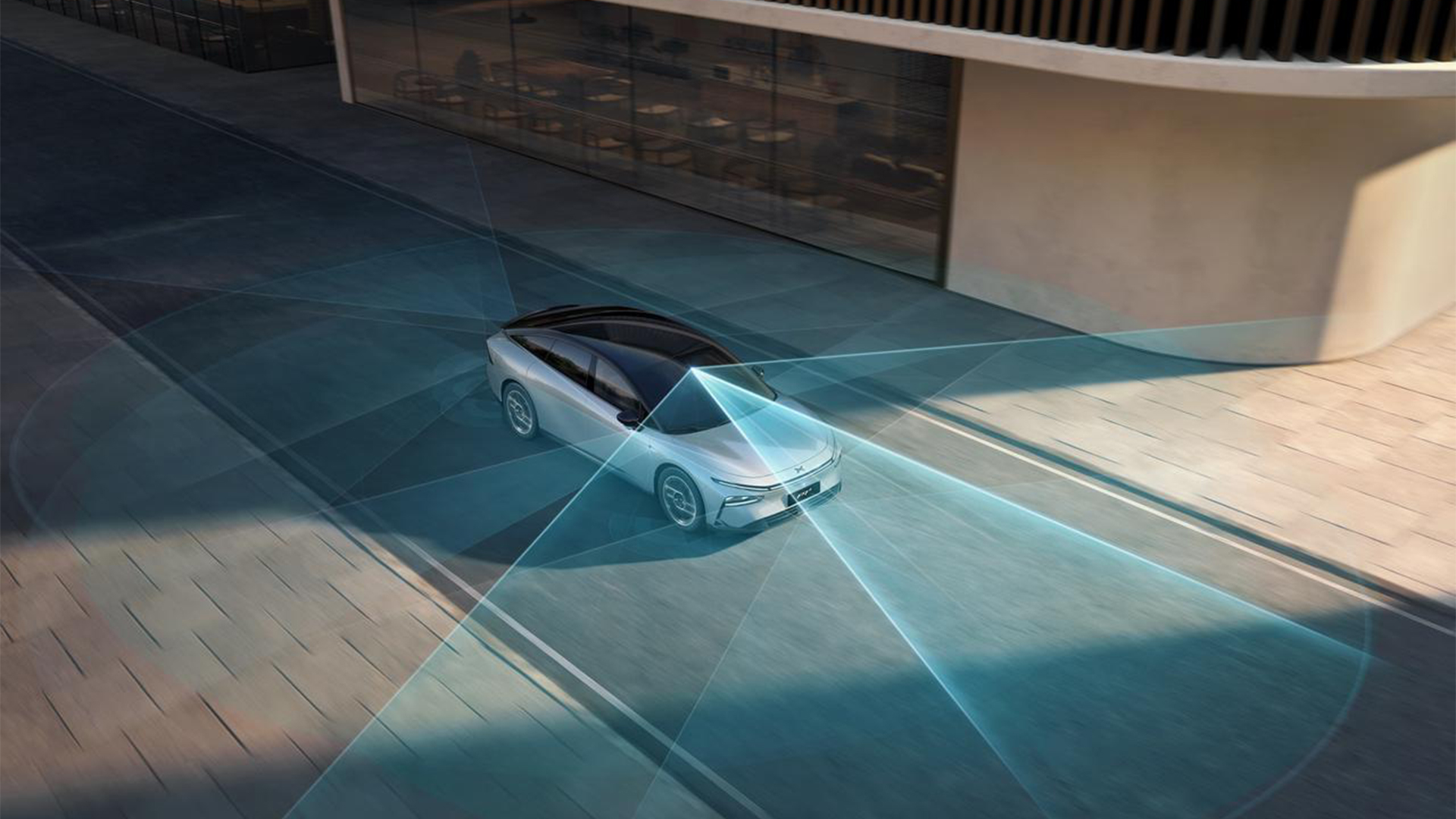X-Peng EV flaunts new AI-powered autonomous driving powers, but it's still a long road to hands-free motoring
The Company's ‘Turing Chip’ will power EVs, robots and flying cars

XPeng Motors has just lifted the lid on its latest family-orientated electric sedan in the form of the P7+, which garnered over 30,000 pre-orders in less than two hours after its reveal, according to CNEV Post.
The electric vehicle offers up to 441-miles of range on a single charge and a peak power output of 308hp, says Car News China, while the interior features a 15.6-inch infotainment system that’s powered by a Qualcomm Snapdragon 8295P chip and an 8-inch screen in the rear.
So far, so very Tesla, but Xpeng Motors says that it is the ‘AI-defined’ nature of its latest EV offering that stands it apart from the competition. The latest autonomous driving system is dubbed AI Hawkeye Visual Solution and it has been designed to see further, react faster to danger and improve accuracy in poor weather and low-light conditions.
The company says the P7+ integrates advanced AI technology across the chassis, powertrain, driving system, smart cockpit, as well as the aforementioned autonomous safety systems, although details remain scarce.
We do know that the P7+ comes equipped with two ‘8M’ cameras, one at the front and one at the rear, with millimeter-wave radars and ultrasonic radars backing up the visual feed. The Chinese company says this high-definition camera solution does away with costly Lidar systems and the need for HD map coverage – again, there’s a lot of Tesla’s thinking at play here.
Apparently, the AI Hawkeye Visual Solution means the vehicle has a sense of time and space and recognizes various road signs and traffic signal systems across different cities, ensuring functionality in diverse urban environments.
In addition to this, AI plays a big part in the overall infotainment offering, with the system able to adapt based on user behavior and even change preferences based on the journey, time of day, and other criteria.
Get daily insight, inspiration and deals in your inbox
Sign up for breaking news, reviews, opinion, top tech deals, and more.
This, XPeng says, is all made possible by the company’s in-house developed ‘Turing Chip’, which will provide the basic compute power for its future EVs, robots and even eVTOL craft.
Analysis: Autonomous driving needs more than AI

XPeng is already showcasing advanced levels of autonomous driving in its domestic market of China, but the company’s chairman, Xiaopeng He, said that he was committed to expanding the brand’s global presence, including launching more models in Europe in the coming months.
Competing directly with the likes of Tesla, XPeng wants to “capture a larger share of the €40,000 (around $52,000 / AU$78,000) and above segment”, with a long-term plan to achieve half of its annual sales from overseas customers.
However, there is still a big question mark over the capabilities of the company’s AI-powered advanced driver assistance system, with many leading figures in the autonomous driving space stating that Lidar and high-definition mapping are essential for safe operation.
Tesla is still busy convincing legislators that its camera-only system is good enough to warrant an Unsupervised Full Self-Driving moniker in the USA, while Europe is generally taking an extremely cautious approach, with only BMW and Mercedes-Benz offering SAE Level 3 highly automated driving in extremely controlled conditions.
What’s more, XPeng’s P7+ is an enormous car. Measuring over five meters in length, it is the equivalent of owning a commercial vehicle, which for many of Europe’s extremely cramped roads, could prove a problem.
With details as scarce as this at launch, XPeng isn't going to convince both potential owners and legislators that its AI Hawkeye Visual Solution is the silver bullet that self-driving vehicles need to achieve commercial success.
You might also like
- Chinese EVs could be derailed in the US as President Biden brands them a security threat
- Android Automotive fully lands on motorcycles – with built-in Google Maps and flash touchscreen displays
- Renault reveals boxy reimagining of the classic R4, proving that electric SUVs don’t need to be bland and faceless

Leon has been navigating a world where automotive and tech collide for almost 20 years, reporting on everything from in-car entertainment to robotised manufacturing plants. Currently, EVs are the focus of his attentions, but give it a few years and it will be electric vertical take-off and landing craft. Outside of work hours, he can be found tinkering with distinctly analogue motorcycles, because electric motors are no replacement for an old Honda inline four.